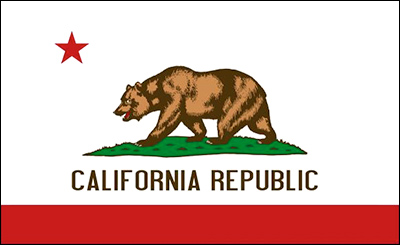In what became an expected announcement, particularly considering the developments during the past few days, 17-term Rep. Jerry Lewis (R-CA-41) confirmed that he will retire at the end of the current Congress. Mr. Lewis, a former Appropriations Committee chairman and the dean of the California Republican delegation, was first elected to the House in 1978 after serving 10 years in the state Assembly.
The California Citizens Redistricting Commission placed Lewis’ home in the new 31st District, a politically marginal seat anchored in the cities of San Bernardino, Rialto, and the congressman’s home of Redlands. But most of his Republican territory wound up in the new 8th District, a seat that begins in San Bernardino County, but which travels up the California-Nevada border all the way to Yosemite. When the map was passed, Mr. Lewis said he would not move his family to claim the 8th, but it also didn’t look like he would risk defeat by running in the 31st, which, more often than not, will elect a Democrat.
The other incumbent placed in CA-31 was Rep. Joe Baca (D-CA-43). Surveying the district after the lines were made public, Mr. Baca believed his political fortunes were better served by running in the new District 35, even though his home city of Rialto is excluded and having to face a popular Democratic state senator, Gloria Negrete McLeod, in an intra-party challenge that could consume a full year under California’s new election law.
Surprisingly, on the heels of the Lewis retirement statement, Rep. Gary Miller (R-CA-42), currently paired with fellow Republican Rep. Ed Royce (R-CA-40) in new District 39, said he will now run in the vacated 31st. Miller currently represents a small portion of San Bernardino County that is housed in the 31st, and he obviously believes his chances of surviving in a marginal Democratic seat are superior to fighting a Republican-on-Republican war with Mr. Royce. Thus, the big winner in this scenario is Rep. Royce, as he is now the only incumbent in the safely Republican CA-39. He still will have significant primary opposition, however, as Orange County Supervisor Shawn Nelson is an announced Republican candidate who could prove to be a formidable candidate.
The Miller move sends another signal, too. Because Rep. David Dreier (R-CA-26), whose current district was split six ways, also represents part of the new 31st it was thought that this could be a landing place for him should Mr. Lewis either run in the 8th or retire. With no further inkling from Mr. Dreier that he is looking at the 31st, the speculation that he too will retire certainly gains credence.
Should Dreier follow suit and leave the House, California Republicans will lose their top four senior members: Lewis, Dreier, Rep. Wally Herger (R-CA-2), and Rep. Elton Gallegly (R-CA-24). Their combined length of service is 118 years.
Now that the 31st is officially an open seat, expect action to occur soon. The top Democrat in the race so far is Redlands Mayor Pete Aguilar. Aside from Rep. Miller, state Senate Minority Leader Bob Dutton and San Bernardino District Attorney Michael Ramos are both potential Republican contenders. Taking into consideration California’s new law that sends the top two finishers from the qualifying election onto the general regardless of political party affiliation, virtually anything can happen in this race.
Though CA-31 leans Democratic, it doesn’t do so by much. Sen. Barbara Boxer (D), for example, won here by just two points, 46-44 percent. The Republican attorney general candidate, though losing a close race statewide, carried the new 31st 46-39 percent. Gov. Jerry Brown scored a 49-41 percent win over GOP businesswoman Meg Whitman.
Expect this race to fluctuate between “toss-up” and “lean Democrat” all the way to the November election.


